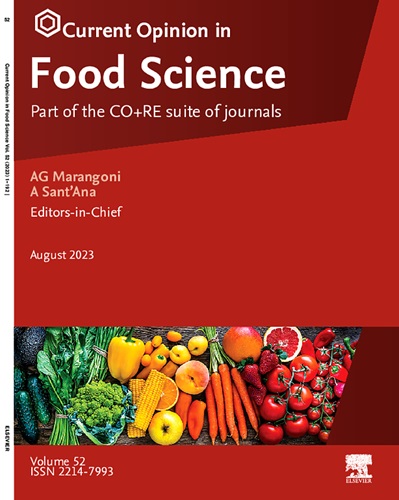克服将工业侧流升级为微藻基食品的挑战的策略:以原coides auxenolorella为例研究
IF 8.9
1区 农林科学
Q1 FOOD SCIENCE & TECHNOLOGY
引用次数: 0
摘要
侧流,包括食品安全的副产品和食用剩余的农业食品工业,代表了未开发的有机营养素的丰富来源。因此,将侧流升级为微藻培养的原料,为提高微生物食品生产和加强粮食安全提供了机会。然而,挑战阻碍了广泛实施。本文确定了主要挑战,并提出了克服这些挑战的策略。这些策略以原coides Auxenochlorella为例,这是一种具有商业意义的微藻,可作为散装食品和特色配料。克服挑战的策略包括,首先,选择富含可同化营养素的侧流,以满足物种特定的代谢需求,并优化生长和/或产品产量。其次,应在个性化生物工艺中对侧流进行量身定制的节能处理,以优化养分回收,从而提高经济和环境可行性。第三,混合不同的侧流减轻了侧流批次的可变性、营养缺乏和供应链中断。第四,为了保持食品质量,有必要对侧流对所得生物质和/或提取物的营养、安全和感官属性的影响进行全面评估。第五,利用共培养克服了微藻单一培养对底物利用的限制,从而提高了资源回收率,并有可能提高产品产量。这些战略为将侧流升级为微藻和微生物食品生产的原料提供了路线图,以实现净零浪费并实现可持续发展目标。本文章由计算机程序翻译,如有差异,请以英文原文为准。
Strategies to overcome challenges in upcycling industrial side-streams into microalgae-based foods: Auxenochlorella protothecoides as a case study
Side-streams, encompassing food-safe by-products and edible surpluses from the agri–food industry, represent an abundant source of untapped organic nutrients. Hence, upcycling side-streams into feedstocks for microalgae cultivation presents opportunities to enhance microbial food production and strengthen food security. However, challenges impede widespread implementation. Here, key challenges are identified, and strategies to overcome them are proposed. Strategies are exemplified with Auxenochlorella protothecoides, a microalga with commercial significance as bulk foods and speciality ingredients. Strategies to overcome challenges include, firstly, selecting side-streams rich in assimilable nutrients that fulfil species-specific metabolic demands and optimise growth and/or product yield. Secondly, tailored energy-efficient treatments of side-streams in individualised bioprocesses should be implemented to optimise nutrient recoveries, thereby improving economic and environmental feasibilities. Thirdly, blending different side-streams mitigates side-stream batch variability, nutrient deficiencies, and supply chain disruptions. Fourthly, a comprehensive assessment of side-stream effects on the nutritional, safety, and sensory attributes of the resulting biomass and/or extract is necessary to maintain food product quality. Fifthly, leveraging co-cultures overcomes the restricted substrate utilisation of microalgae monocultures, leading to improved resource recovery and potentially higher product yields. These strategies provide a roadmap for upcycling side-streams as feedstocks for microalgae-based and microbial food production to achieve net-zero waste and meet sustainable development goals.
求助全文
通过发布文献求助,成功后即可免费获取论文全文。
去求助
来源期刊

Current Opinion in Food Science
Agricultural and Biological Sciences-Food Science
CiteScore
18.40
自引率
4.00%
发文量
157
审稿时长
92 days
期刊介绍:
Current Opinion in Food Science specifically provides expert views on current advances in food science in a clear and readable format. It also evaluates the most noteworthy papers from original publications, annotated by experts.
Key Features:
Expert Views on Current Advances: Clear and readable insights from experts in the field regarding current advances in food science.
Evaluation of Noteworthy Papers: Annotated evaluations of the most interesting papers from the extensive array of original publications.
Themed Sections: The subject of food science is divided into themed sections, each reviewed once a year.
 求助内容:
求助内容: 应助结果提醒方式:
应助结果提醒方式:


